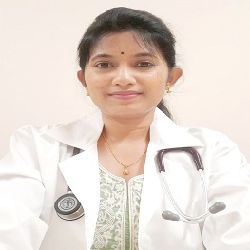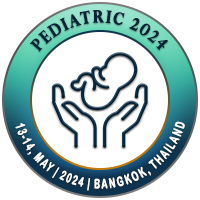
Harshini T Reddy
Manipal Hospital, IndiaTitle: Assessment of bone health by ultrasonography in peripubertal children - Study from a tertiary care centre, India
Abstract
Background: The foundation for healthy bones is laid at a very young age. Studies estimate that bone quality is established in first two decades of life. Failure to achieve peak bone mass in associated with increased risk of osteoporosis and fractures in later stages of life. Bone health estimation in children can be performed using Dual Energy X-ray Absorptiometry (DEXA), Quantitative Computed Tomography (QCT) and Quantitative Ultrasound (QUS). QCT AND DEXA expose children to ionizing radiation which can be avoided by the emerging new technique QUS.
Aims:
Primary Objectives:
1. To establish an age-dependent reference range for SOS (Speed of Sound) at the radius in children between 10 and 18 years old using ultrasound.
2. To establish correlation of SOS at the radius with age, weight, height, and BMI.
Secondary Objectives:
1. To establish correlation of SOS at the radius before and after attaining puberty.
Methods:
Study Design: Cross sectional study (Sample Size: 340: estimated using PASS software)
Duration: 1 YEAR
Methodology: Participants were selected from schools in the city of Bangalore aged between 10-18 years. All participants completed a questionnaire that evaluated lifestyle factors, diseases, and medications that affected skeletal development. The scan was performed on distal third of radius bone of dominant and non-dominant hand.5 minutes per child is the estimated total scan time including 2 minutes for scanning and 3 minutes for preparation.paediatric software was used to analyze the resulting image which is provided by the manufacturer.
Exclusion Criteria: children with chronic illness, skeletal and bone problems, long term medications (steroids, anticonvulsants), dietary supplements (calcium and vitamin D), fracture history.
Device: Sunlight Omniscience 7000p QUS device
Results: Bone density was measured for 340 children. 4 children among them were excluded due to difficulty in locating bone by ultrasound probe because of soft tissue increase. Study population consisted of 336 children, 180 males and 156 females with an age range between 10-18 years. The speed of sound measurement data collected was analyzed and evaluated with respect to reference curves generated for various ethnicities. The data collected showed an increase in speed of sound with increase in age and the rate of increase is higher during puberty. The increase in SOS (speed of sound) values is similar to previous studies conducted to establish reference curves for pediatric population. Mean age of the population in this study was 13.75+2.364 years and mean SOS values are 3728.70 m/s for males and 3767.95m/s.
Conclusion: The data collected suggests a correlation between speed of sound and age group of subjects. Rate of increase in speed of sound is higher during ages of attaining puberty. QUS (Quantitative Ultrasound) can provide an easier and cheaper alternative to estimate bone mass in pediatric population.
Biography
Harshini T Reddy has an expertise in giving care from the newborn to adolescent. Her specialties include pediatric care, neonatal care, child nutrition and developmental care for normal babies to very low birth weight babies. She is well trained in treating sick newborns with respiratory disorders. Her multi-disciplinary training has given him the knowledge and skills required to deal with the challenging problems encompassing the field of pediatrics and critical care management of newborns. She has worked at leading hospitals in India and is passionate about ensuring optimal health outcomes for children through simple and cost effective interventions in OPD and the community

